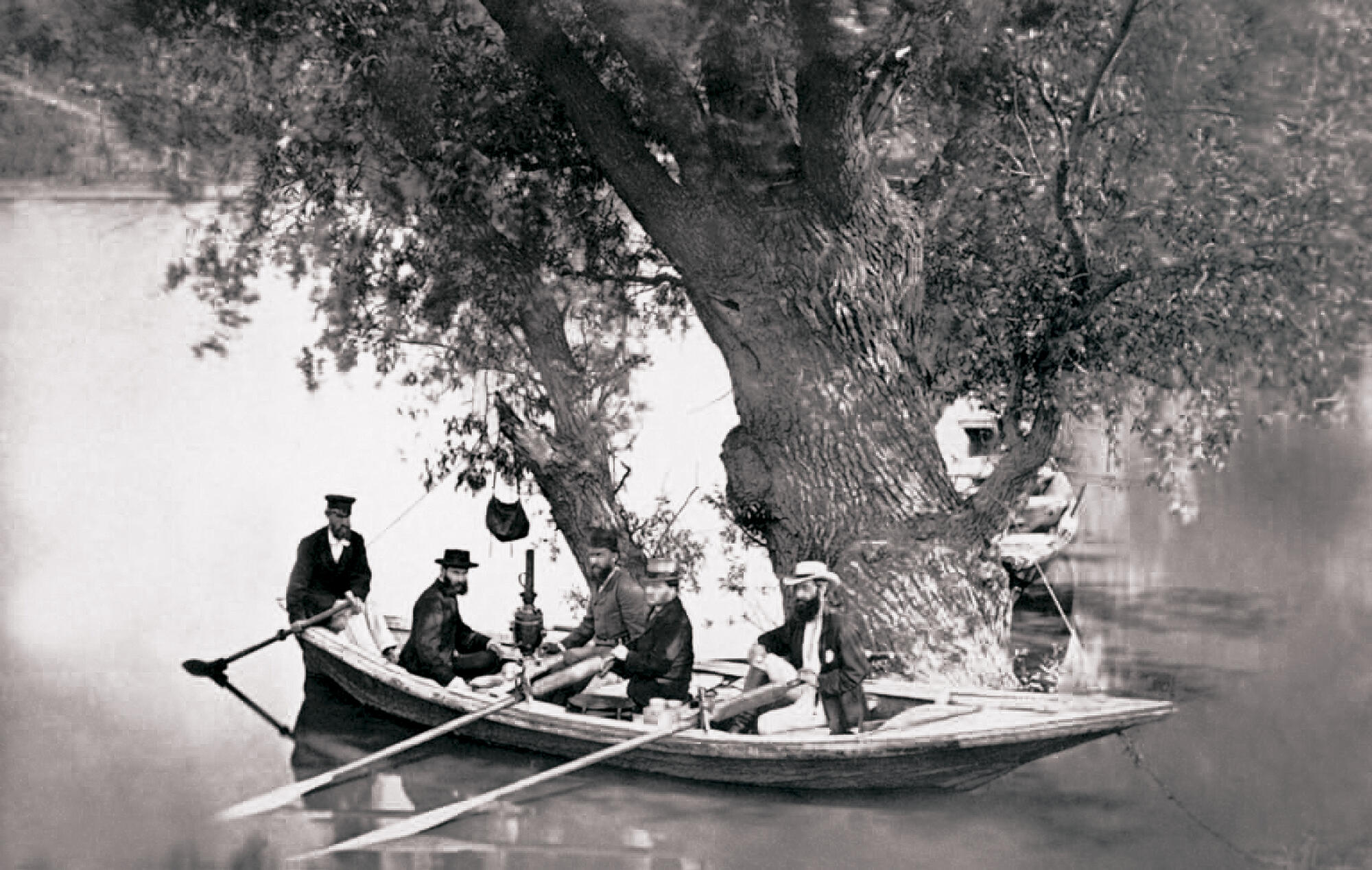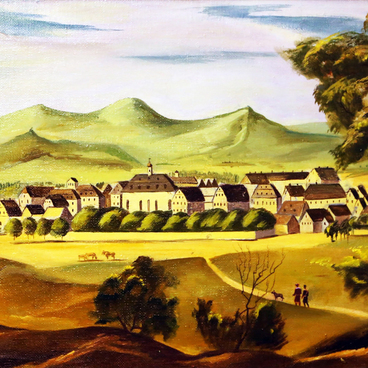Еhis spring photo shows five Sareptians in a boat on oars, with a samovar, near a spreading willow. The names of the four men in the photo are known: A. Kupper is a Russian language teacher at the Sarepta boys 'school, I. Furstenberg is the trustee of the Sarepta boys' school, H. Hamberg is a Sarepta doctor. Occupation of N. Kaiser is unknown.
The Sarpa River flowing next to the German colony of Sarepta with picturesque banks was a favorite place for local residents’ leisure. Here they rode boats and fished. Colonists often borrowed household customs from the local population. So, they quickly adopted the samovar from the Russians as a convenient means of boiling water for tea.
Photography appeared in Russia thanks to a native Sareptian, Joseph Hamel. Hamel was born on January 30, 1788. Like all Sareptians, he was a member of the fraternal community of Hernguters - representatives of the Protestant movement in Christianity.
Joseph Hamel graduated from the school of the fraternal community for boys and continued his education in St. Petersburg. The range of his scientific interests covered many industries. At the Academy of Sciences, he had an interesting position: Hamel was supposed to visit highly developed countries, get acquainted with the novelties of science and technology there, and report all this to the St. Petersburg Academy.
At the beginning of 1839, the whole civilized world spread the news about the invention of daguerreotype - a way to fix an image drawn by the sun’s rays in a camera obscura using chemicals. Scientists asked Hamel to collect information about the invention of Louis Daguerre that caused so much noise and, if possible, to get pictures and equipment.
After visiting London, Hamel learned that the Englishman Fox Talbot had made a similar discovery. The Russian scientist hastened to get acquainted with Talbot and his method of obtaining “photogenic drawings” - as Talbot called pictures taken without using a camera.
Hamel described Talbot’s method in detail in his letters to the Academy of Sciences, and at the same time sent several pictures taken by an English inventor, paper for printing them, and some accessories used in this process.
After that, Julius Fritzsche, a famous German and Russian chemist and botanist, was instructed to comprehensively study the method of obtaining images according to Talbot and express his opinion about him. Fritzsche’s photograms were the first photographic images taken in Russia.
Joseph Hamel was also one of the world’s first historians of photography. The archive of unique documents on the history of the invention of photography, which he collected, is still the most important source on this topic.
The Sarpa River flowing next to the German colony of Sarepta with picturesque banks was a favorite place for local residents’ leisure. Here they rode boats and fished. Colonists often borrowed household customs from the local population. So, they quickly adopted the samovar from the Russians as a convenient means of boiling water for tea.
Photography appeared in Russia thanks to a native Sareptian, Joseph Hamel. Hamel was born on January 30, 1788. Like all Sareptians, he was a member of the fraternal community of Hernguters - representatives of the Protestant movement in Christianity.
Joseph Hamel graduated from the school of the fraternal community for boys and continued his education in St. Petersburg. The range of his scientific interests covered many industries. At the Academy of Sciences, he had an interesting position: Hamel was supposed to visit highly developed countries, get acquainted with the novelties of science and technology there, and report all this to the St. Petersburg Academy.
At the beginning of 1839, the whole civilized world spread the news about the invention of daguerreotype - a way to fix an image drawn by the sun’s rays in a camera obscura using chemicals. Scientists asked Hamel to collect information about the invention of Louis Daguerre that caused so much noise and, if possible, to get pictures and equipment.
After visiting London, Hamel learned that the Englishman Fox Talbot had made a similar discovery. The Russian scientist hastened to get acquainted with Talbot and his method of obtaining “photogenic drawings” - as Talbot called pictures taken without using a camera.
Hamel described Talbot’s method in detail in his letters to the Academy of Sciences, and at the same time sent several pictures taken by an English inventor, paper for printing them, and some accessories used in this process.
After that, Julius Fritzsche, a famous German and Russian chemist and botanist, was instructed to comprehensively study the method of obtaining images according to Talbot and express his opinion about him. Fritzsche’s photograms were the first photographic images taken in Russia.
Joseph Hamel was also one of the world’s first historians of photography. The archive of unique documents on the history of the invention of photography, which he collected, is still the most important source on this topic.




